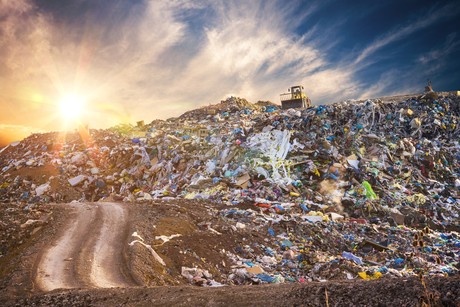Household waste is set to generate energy in WA

The Clean Energy Finance Corporation (CEFC) is committing up to $90 million in debt finance and the Australian Renewable Energy Agency (ARENA) is funding $23 million to develop what is claimed to be Australia’s first large-scale energy-from-waste (EfW) project.
The EfW plant, which will be located 40 km south of Perth at Kwinana in Western Australia, will be capable of producing 36 MW of electricity, enough to power up to 50,000 homes.
When built, the $700 million project will also be able to reduce waste going to landfill — processing around 400,000 tonnes of municipal solid waste from non-recyclable curbside ‘red bin’ collection as well as C&I and C&D residual waste every year.
The Kwinana plant will be co-developed by Macquarie Capital and Phoenix Energy Australia, with co-investment by the Dutch Infrastructure Fund (DIF). Acciona has been selected to design and build (D&B) the project, while Veolia will be responsible for the operations and maintenance (O&M).
Keppel Seghers moving grate technology, which has not been previously used in Australia, will be used at the plant. This technology is used in more than 2000 facilities globally, and more than 100 waste-to-energy plants in 18 countries.
ARENA CEO Darren Miller said the project provides a renewable energy solution for reducing waste going to landfill.
“The use of combustion grate technology is well established in Europe and North America but has not yet been deployed in Australia,” Miller said.
“More than 23 million tonnes of municipal solid waste is produced annually in Australia and this project could help to divert non-recyclable waste from landfill and recover energy in the process.”
The plant is expected to reduce CO2 emissions by 400,000 tonnes per year, the equivalent of taking 85,000 cars off the road.
CEFC CEO Ian Learmonth said the landmark project was the CEFC’s largest investment in WA to date.
“Creating energy from waste is an exciting and practical way to reduce the amount of waste going to landfill, while also delivering cleaner low carbon electricity,” Learmonth said.
“The average red-lid wheelie bin contains enough waste to produce up to 14% of a household’s weekly power needs. This investment is about harnessing that energy potential, while safely diverting waste from landfill."
Construction is expected to commence this month and to be completed by the end of 2021.
Macquarie Capital Executive Director Chris Voyce said the Kwinana plant is expected to employ around 800 workers, including apprentices, during its three-year construction phase, and some 60 operations staff on an ongoing basis.
$25m grant supports cleaner cement production
The upgrades will enable the Berrima Cement Works kiln to source up to 60% of its energy from...
$39m boost to NSW's EV fast charging network
Applications are open for Round 4 of the NSW Government's EV fast charging grants program,...
Agreement unites clean energy providers
Wind and water energy come together as Aula Energy signs a long-term power purchase agreement...







